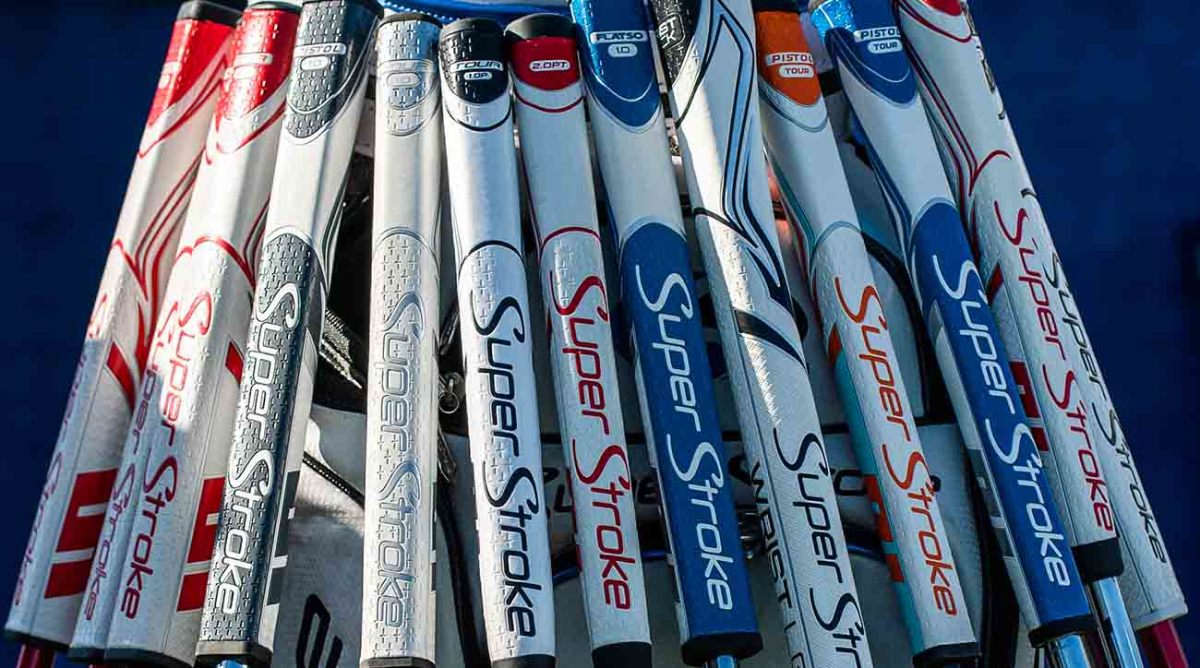This Company's Innovations Reside in the Palm of Your Hands

The Arena Media Brands, LLC and respective content providers to this website may receive compensation for some links to products and services on this website.
When golfers read about innovations in golf clubs today, they expect to learn something new about the latest improvements in the clubheads of metalwoods, irons, wedges, and putters. Yet if they looked at the club resting in their hands, staring them straight in the eye they would see the neglected sibling of the golf equipment industry: the grip.
Dean Dingman, founder and CEO of SuperStroke, makers of today’s innovative and increasingly popular putter grips, has not neglected the grip. Dingman began his career in the golf industry as a salesman for Pole-Kat, makers of long putters sometimes referred to as “brooms.” From the get-go he had a keen eye for golf equipment that would make the game easier and more fun to play, a talent that would lead him to take a closer look at the first SuperStroke company.
By the mid-2000s, that company was producing oversized rubber putting grips that sported a unique non-tapering geometry that extended in the same thickness all the way from the grip’s top through its bottom.
Get up to 17% off select SuperStroke grips through our partners at PGA TOUR Superstore
Made out of hard rubber, these grips weighed in at approximately 240 grams—nearly five times the weight of conventional putter grips today. While they provided stability in the top end of the putter, these first oversized putter grips also made the clubheads feel extremely light and therefore difficult for golfers to control. Yet K.J. Choi managed to win the 2008 Sony Open with the original SuperStroke grip on his putter.

Dingman purchased the original SuperStroke and its patented parallel/non-taper putter grip design shortly after Choi’s victory. At his new company, Dingman employed a blend of EVA foam and polyurethane in his first grips which not only made the grip lighter (closer to the standard weight range of the industry’s other putter grips), but also softer to enhance their feel in a golfer's hands. He introduced an innovative and patented stitched-in reminder ridge or spine (“SPYNE” as SuperStroke spells it) which runs full-length down the middle of the underside of the grips and assists golfers in placing their hands on the grip in a consistent manner every time.
Over time, many of SuperStroke’s grips also would offer counter-weighting or balancing possibilities by means of a hollow port drilled in at the end of the grip, into which golfers can insert a 25-, 50- or 75-gram aluminum plug. In raising the inertia point of the entire putter higher toward the player's hands, the feature helps steady the hands toward producing a smooth and more repeating putting stroke.
“Our first grips were white,” Dingman says. “That was intentional so they would be visible on TV.”
The strategy worked. Golf fans got their first look at a SuperStroke on the putter of Jason Dufner during the 2011 PGA Championship, where he finished second to Keegan Bradley. Just two years later, Dufner would win the PGA Championship. Also in 2013, 19-year-old Jordan Spieth burst onto the stage with a dramatic win at the John Deere Classic and Phil Mickelson captured the British Open at Muirfield. They were all putting with SuperStroke putter grips.

By the time the leaves on the trees changed colors that autumn, Dingman said sales of SuperStroke grips “had gone ballistic.”
Get the best price on SuperStroke grips with our partner at PGA TOUR Superstore
Phil Kenyon, one of today’s leading putting teachers who lists Keegan Bradley, Justin Rose, Matt Fitzpatrick, Tommy Fleetwood, Max Homa and Scottie Scheffler among his students, sees the integration of the grips’ myriad technologies as the reason why they help golfers putt so much better.
“Small movements of the hands during the stroke magnify the movement of the putter head through impact,” Kenyon says. He adds that SuperStroke's comfortable feeling in the golfer’s hands combined with the SPYNEs work together to augment the player’s proprioception—or awareness of how their hands move through space during the stroke—and this in turn results in more putts starting on line.
Ian Zubkoff, SuperStroke’s vice president of sales, has worked with Dingman since 2008. Noting that this year marks their company’s 15th anniversary, Zubkoff exudes pride over SuperStroke’s growth and achievements.
“There are a handful or so of companies that have changed the golf industry over time,” Zubkoff says, citing Spalding, Wilson, Callaway, TaylorMade and Titleist.
“I like to think that SuperStroke has changed the industry as well, because of the number of grips it offers golfers, and the quality of performance-improving features designed into each grip. “
A perusal of SuperStroke’s online listing of grips does much to support Zubkoff’s claim. The company presents 16 models of putter grips of different sizes, lengths, thicknesses, weights and contour profiles. Many of the models come with the company’s counterbalancing options; others have been fashioned to accommodate the different styles of putting that golfers use today.
These include claw-type grips, arm lock grips, long putter grips, and even a grip called the “wrist lock” designed to work with the so-called “lock and hold” (some call it “blocking”) style of putting (used at times by Phil Mickelson) in which golfers freeze their wrists in place and then drag the putter into the ball through impact. (Get the wrist lock grip for $29.99 at PGA TOUR Superstore)
The company’s grips carry a new branding umbrella or logo, “Zenergy,” which according to Dingman reflects the products’ “softer textural feel" (especially in the lower right hand section, for right-handed putters). The name may also remind golfers of that calm and clear mental zone of focused concentration while is ideal when putting.
Should a player miss a putt or two during their round? Well, hey, it's still a beautiful day to be out there playing golf.
Editors’ note, Dec. 28 at 2:30 p.m. ET: An earlier version of this story misstated the name of SuperStroke’s vice president of sales. He is Ian Zubkoff, not Zuboff.
